The oxpecker family, scientifically known as Buphagidae, compromises of just two species, both of which are residents here in Rwanda and found in Akagera National Park. Their plumage is described as being a drab brown with lighter undersides. The eyes of both species are a striking bright yellow which boldly contrasts with their otherwise subdued colouration. Red-billed Oxpeckers have an all-red bill and yellow eye-ring, whereas the bills of Yellow-billed Oxpeckers are mostly bright yellow and red only at the tip, they also don’t have an eye-ring. But what these birds lack in the looks department they make up for in their unusual habits.
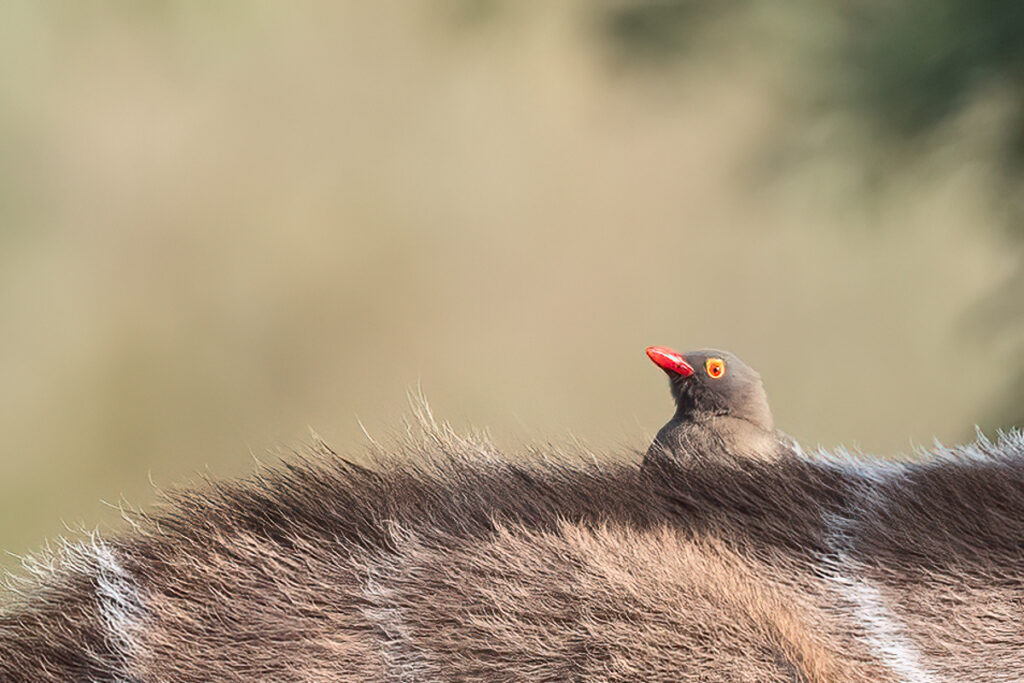
Oxpeckers are primarily found in savanna, grassland, and open woodland areas where they spend almost all of their time on the backs of mammalian herbivores. The smallest hosts they can be found on include impala and warthog, and the largest hosts are rhino, hippo, buffalo and giraffe. Red-billed Oxpeckers are usually found on the smaller hosts and are subordinate to the slightly larger Yellow-billed Oxpecker, which also tend to be more abundant. Both species have short legs which hold their bodies close to their hosts, strong feet and curved claws for gripping fur and skin, and like woodpeckers, have stiffened and graduated tail feathers (rectrices) for support when they cling to vertical surfaces on their hosts, although these vertical surfaces are necks and bodies rather than trees and branches!
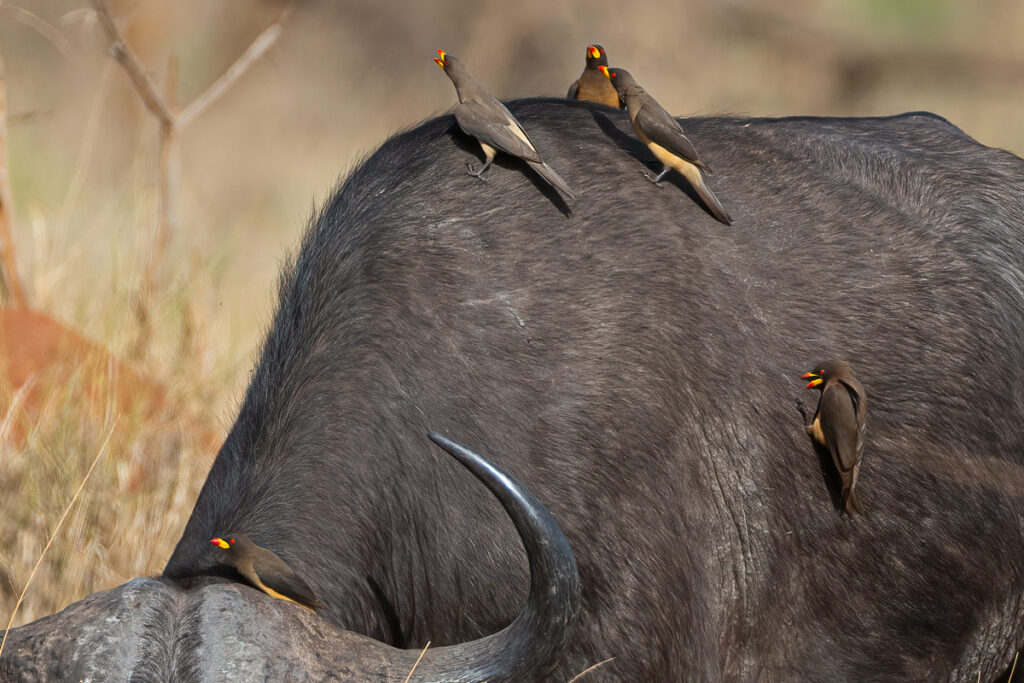
These birds are obligate ectoparasites, meaning they depend on their hosts for food. Oxpeckers feed almost exclusively from their hosts and their diet consists of wound tissue, blood, ticks, fleas, and even ear wax. Both species have evolved flattened bills for ‘scissoring’ through the fur of their hosts to find their prey. They also have overlapping bill tips which allow for easier removal of ticks and other ectoparasites found on the hides of their thick-skinned hosts. The symbiotic relationship between oxpeckers and their hosts was initially thought to be mutualistic, meaning both parties benefited equally from the relationship. However, recent research has shown that whilst oxpeckers do remove ectoparasites from their hosts and keep any wounds on their hosts clean, they also pick at wounds to keep them open, allowing them to feed on the flesh and blood. This behaviour highlights that the relationship between oxpeckers and their hosts is more complex than initially thought, and almost verges on parasitism.
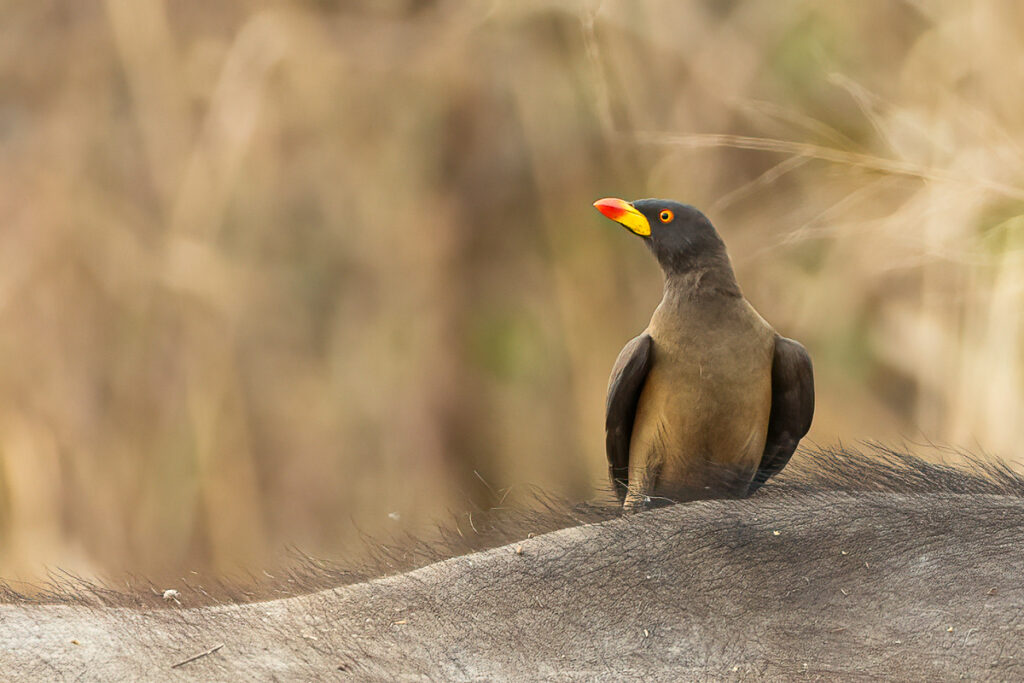
Due to the wary nature of oxpeckers, they provide a great early warning system for their hosts. Birds are usually more vigilant than most big animals and when disturbed an oxpecker will take flight from their host whilst issuing their alarm call. This alerts the remaining oxpeckers in the group which also take flight. This usually causes the host to look up and respond to a potential threat. When I spot oxpeckers in flight whilst driving through closed habitats in Akagera National Park, I take it as an indication that at least one large mammal – rhino, buffalo or even a hippo – is likely to be close by, even if I can’t see it. I am then on high alert as I don’t want my presence to surprise them and cause them to charge!
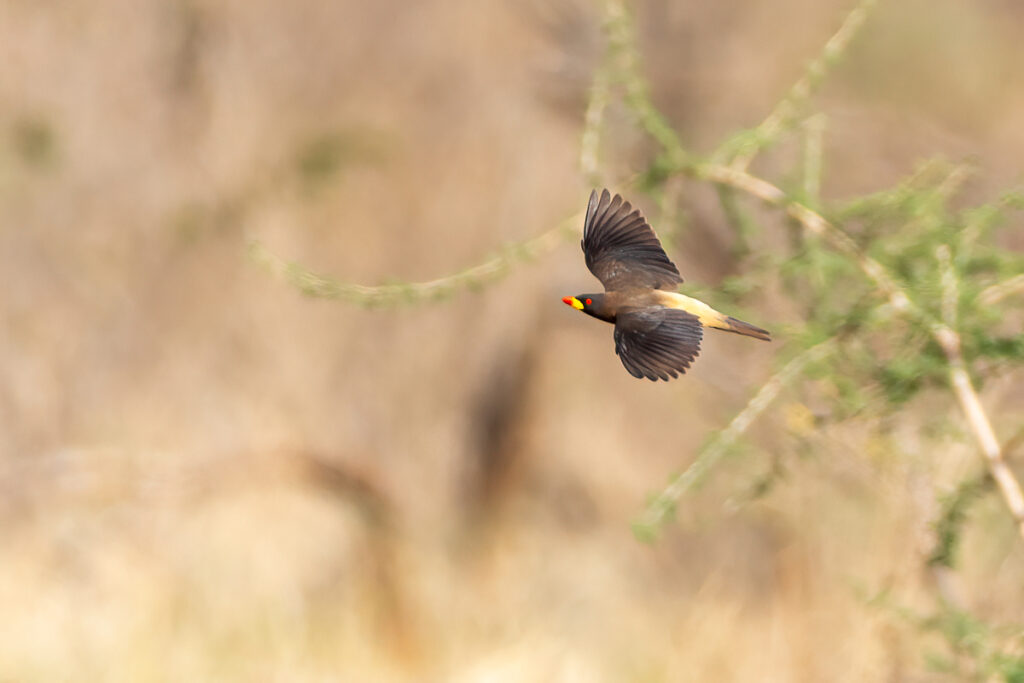
Oxpeckers are socially monogamous and cooperative breeders, meaning offspring from a previous brood will help the dominant pair construct a nest and raise their young. They breed during the rainy season, and courtship and mating all take place on their hosts. Nests are then made in natural cavities in dead trees or an unused cavity nest of another bird species. Nests are lined with hair plucked from their hosts, as well as grass. Cracks in the walls of the nest cavity are sealed with dung, which also comes from their hosts. Only the dominant pair in each group incubates the eggs, which starts before all the eggs have been laid and means the altricial chicks won’t hatch at the same time. Nestlings will remain in the nest for 25 to 30 days, during this time food collected from their hosts is delivered to the nestlings by parents and helpers.
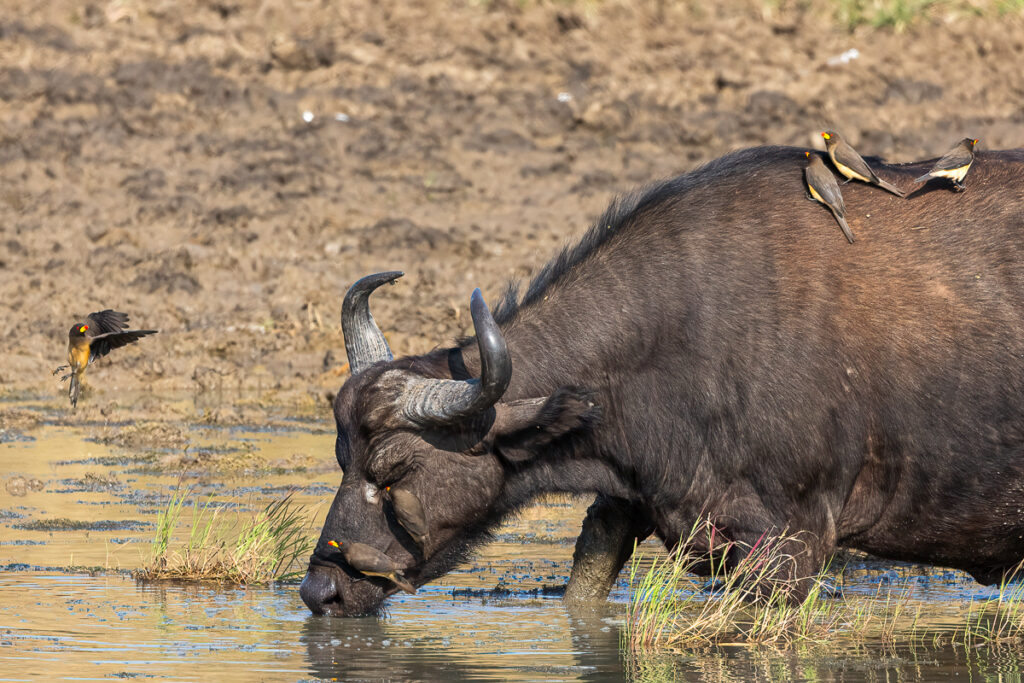
I think oxpeckers are fascinating, not just in terms of how they look – with their bright eyes, bills, and eye-rings, but also the complexities of the relationship between them and their hosts, which highlights an intricate balance of ecosystems within nature, which isn’t always what it initially seems.

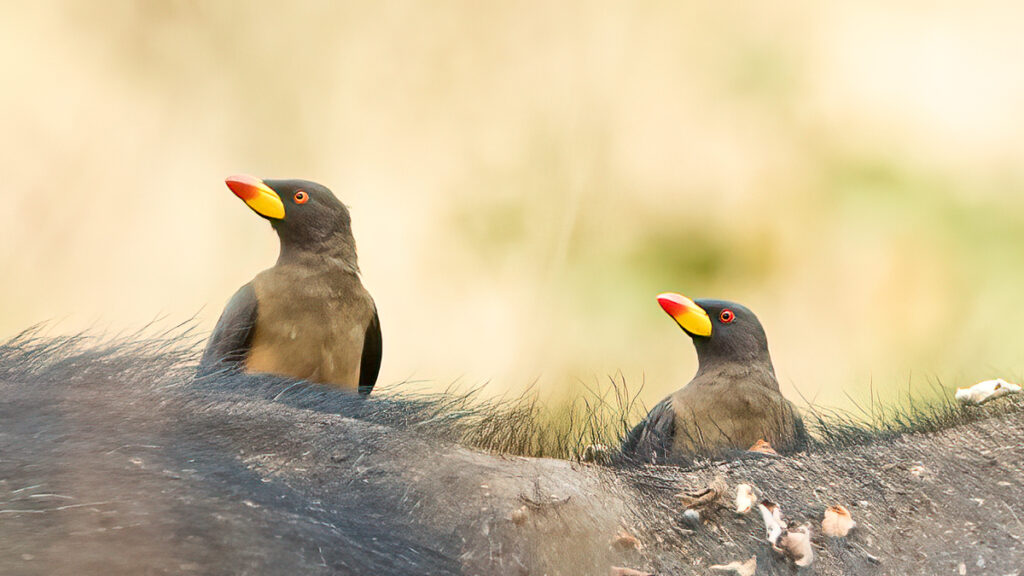
Extraordinary article, so well documented, a lot of details about oxpeckers. First time i hear about these birds, can’t remember seeing one in Congo (decades ago, so my memory…).
An article which give us the desire to visit Rwanda and observe these birds and all the Wildlife around.
Bravo and thanks once more Will!!!
Very interesting Will, I always thought they helped each other but didn’t know about the wound cleaning and blood thing, not so good I guess, I used to be fascinated by our cleaner fish in a salt water tank that did the same thing to fish